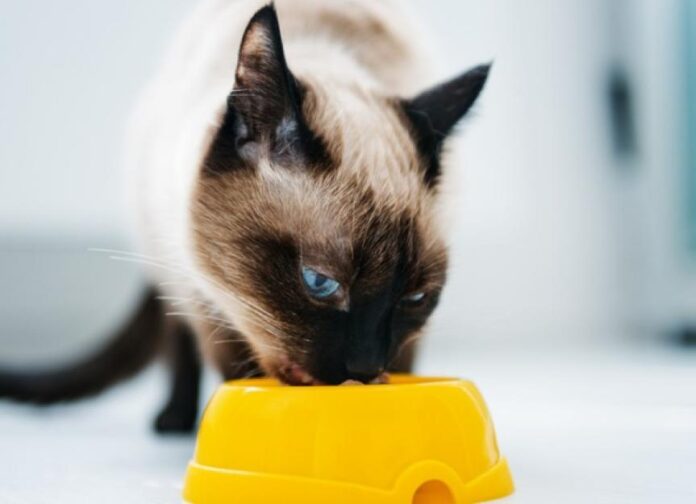The Rise of Freeze-Dried Cat Food: A Comprehensive Overview
In recent years, an increasing number of pet owners are exploring freeze-dried cat food, along with other diet options like raw, “human-grade,” and limited-ingredient diets. While freeze-dried food currently makes up a smaller portion of the overall cat food market compared to kibble and canned varieties, its popularity is on the rise.
Understanding the nutritional needs of cats is essential, as dietary deficiencies can lead to significant health issues, some of which may be irreversible. Always consult a veterinarian or a board-certified veterinary nutritionist when considering dietary changes for your cat, as various factors—including age, medical conditions, and medications—can significantly influence dietary choices.
What Is Freeze-Dried Cat Food?
Freeze-drying is a preservation method that involves freezing food and placing it in a vacuum, allowing moisture to sublimate from ice to vapor. The resulting product is sealed in airtight packaging, providing a long shelf life at room temperature—a notable advantage over non-freeze-dried alternatives.
Freeze-dried cat food is considered a raw food product, as it has not been subjected to cooking or pasteurization. It can be offered as a standalone meal, a treat, or as a topper for kibble.
How Is Freeze-Dried Cat Food Different From Raw Cat Food?
The differences between freeze-dried cat food and traditional raw food are crucial for pet owners to understand:
- Moisture Content: Freeze-dried food undergoes a process that removes moisture, enhancing its shelf stability.
- Commercial Availability: Freeze-dried foods are commercially produced, while traditional raw diets are typically homemade or sourced from local shops, often lacking stringent safety measures.
- Nutritional Balance: Many homemade raw diets are not regulated or balanced unless overseen by a certified veterinary nutritionist.
Freeze-Dried Cat Food vs. Dehydrated Cat Food
Though both freeze-dried and dehydrated cat foods aim to eliminate moisture, they employ different methods. Freeze-drying uses cold temperatures, while dehydration relies on low heat, which does not fully cook the food. Generally, freeze-dried foods retain more vitamins and have less moisture than their dehydrated counterparts, leading to a longer shelf life.
Safety of Freeze-Dried Raw Cat Food
When it comes to raw diets, both cats and humans face inherent risks. Vulnerable populations, including young children, the elderly, and individuals with compromised immune systems, are particularly at risk. Here are some significant safety concerns:
Risk of Bacteria and Parasites
Raw cat food is susceptible to bacterial contamination, with E. Coli, Salmonella, and Listeria being common culprits. Additionally, certain meats may harbor parasites. For instance, an outbreak of tuberculosis in the UK was linked to commercial raw cat food.
While freeze-drying can reduce the presence of some pathogens, no raw diet is entirely risk-free. Even commercially freeze-dried foods can become contaminated post-manufacturing.
Nutritional Deficiencies
Another significant risk involves the potential for nutritional imbalances in both homemade and commercial raw diets. Pet owners should ensure that freeze-dried options are labeled as complete and balanced or discuss their diet with a veterinary nutritionist.
Health Risks for Cats and People
Feeding raw diets is discouraged for cats with certain health conditions, such as diabetes or autoimmune diseases, particularly in households with immunocompromised individuals, due to an increased risk of foodborne illnesses.
Is Freeze-Dried Cat Food Healthier for Cats?
While many advocates claim that raw diets promote better health in cats, scientific research does not conclusively support this. Although raw meat may be more digestible than cooked varieties, the risks associated with raw feeding have not been sufficiently outweighed by the benefits.
Preparation of Freeze-Dried Cat Food
Many freeze-dried products are designed for convenience, requiring no rehydration when mixed with kibble. However, rehydration is typically necessary for standalone meals. Always verify packaging instructions and consult your veterinarian, especially if using pet-safe broths that may contain high sodium levels.
Important Food Safety Guidelines
Always adhere to stringent food safety practices when preparing raw diets to minimize the risk of contamination. Handwashing is crucial, and all surfaces that come into contact with raw food must be thoroughly cleaned and disinfected. For further guidance, refer to the FDA’s recommendations on pet food safety.
Storage of Freeze-Dried Cat Food
Freeze-dried cat food is generally shelf-stable at room temperature, but it’s imperative to follow storage instructions on the packaging. Once opened, most varieties should be refrigerated and should not be left out for more than an hour to avoid foodborne illness. Always check expiration dates and storage guidelines to ensure safety.
Conclusion
As the trend toward freeze-dried cat food continues to grow, pet owners must make informed decisions regarding their pets’ diets. Consulting with professionals and understanding the nuances of freeze-dried versus raw food can lead to healthier choices for both pets and their families.











